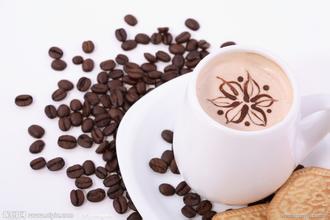Introduction to the roasting method of coffee roasting grade
Baking grade. Most professional coffee roasters don't use words like bright, medium, or dark to describe roasting grades. They describe them as exaggerated synaesthesia, such as earthy or chocolate-colored coffee beans. If you don't see a word for flavor, it's likely that the coffee bean baker is unprofessional. This is by no means a good sign.
Cups or cans. Dehydrated coffee is usually bottled in glass, but it may also be packed in cans and plastics. None of this is environmentally friendly: more carbon dioxide is produced in both production and transportation. There is also a problem with transparent bags, because light is the main natural enemy of coffee beans, and darkness is their old friend.
There is too much coffee in stock. Unless you are buying coffee for the army or office, buy less than 2 pounds at a time. Because it deteriorates over time, and the most famous bakers don't want their products to stay on the shelf for a few weeks.
A buzzword. Natural, pure and eco-friendly sounds great, but it doesn't carry much weight. Look for USDA organic certification or Fair Trade certification stickers-many good coffees don't have these certifications, but beware of the traps behind the fancy words. The really useful information is the altitude of growth, the description of processing and the type of variety.
We don't sell whole bean coffee. If a brand does not sell whole bean coffee, it is not a good sign.
Coffee is sold in boxes. If it is not properly packaged, it is likely to be of poor quality, as it shows that the coffee does not pay attention to quality assurance and freshness, and the coffee will deteriorate quickly when exposed to light and air.
Lack of characteristics of origin. Countries like Colombia and Guatemala are not small. They have many kinds of coffee. Listing farms and regions can stimulate purchasing confidence, otherwise it will reduce it.

Important Notice :
前街咖啡 FrontStreet Coffee has moved to new addredd:
FrontStreet Coffee Address: 315,Donghua East Road,GuangZhou
Tel:020 38364473
- Prev

How coffee is made
Drip coffee brewing method invented by the Germans. Simply put, ground coffee is placed in a funnel or filter paper, poured with hot water (ideal temperature between 90C and 95C), and the coffee flows out from below due to gravity. The amount of coffee is usually 7 to 10 grams of powder can be made into a cup of about 120ml. Syphon pot Syphon pot
- Next

Introduction to the main producing countries and classification of coffee
Coffee trees in the main coffee producing countries are very similar to laurel and usually grow in the area between the Tropic of Cancer and the Tropic of Cancer. A coffee tree usually grows for about three to four years before it begins to bear fruit. the fruit is a red berry and a small number of yellow berries. After drying and removing the pulp, the coffee beans can be separated. Coffee beans can be seen all over the world, as long as the climate is right.
Related
- Does Rose Summer choose Blue, Green or Red? Detailed explanation of Rose Summer Coffee plots and Classification in Panamanian Jade Manor
- What is the difference between the origin, producing area, processing plant, cooperative and manor of coffee beans?
- How fine does the espresso powder fit? how to grind the espresso?
- Sca coffee roasting degree color card coffee roasting degree 8 roasting color values what do you mean?
- The practice of lattes: how to make lattes at home
- Introduction to Indonesian Fine Coffee beans-- Java Coffee producing area of Indonesian Arabica Coffee
- How much will the flavor of light and medium roasted rose summer be expressed? What baking level is rose summer suitable for?
- Introduction to the characteristics of washing, sun-drying or wet-planing coffee commonly used in Mantenin, Indonesia
- Price characteristics of Arabica Coffee Bean Starbucks introduction to Manning Coffee Bean Taste producing area Variety Manor
- What is the authentic Yega flavor? What are the flavor characteristics of the really excellent Yejasuffi coffee beans?

